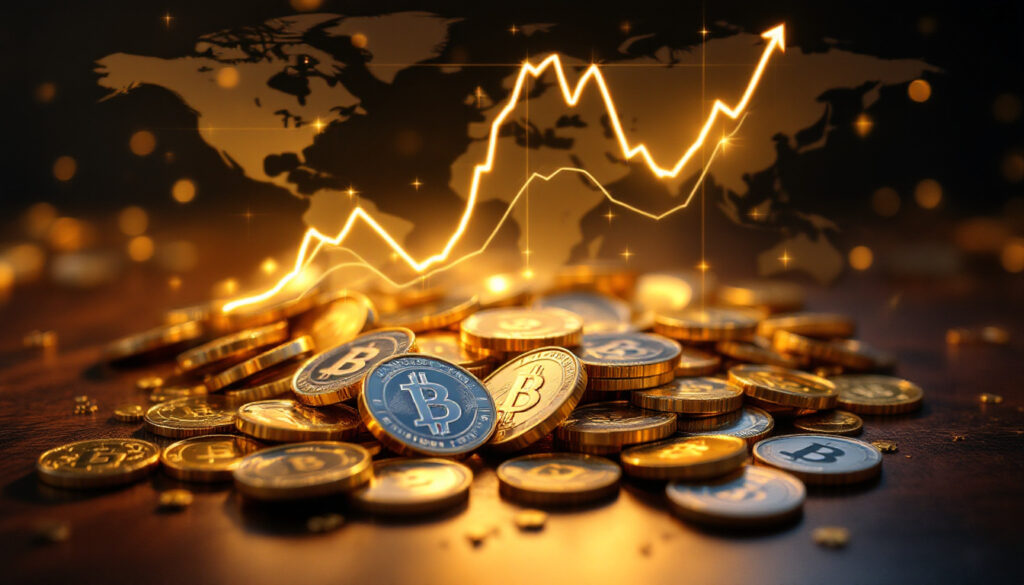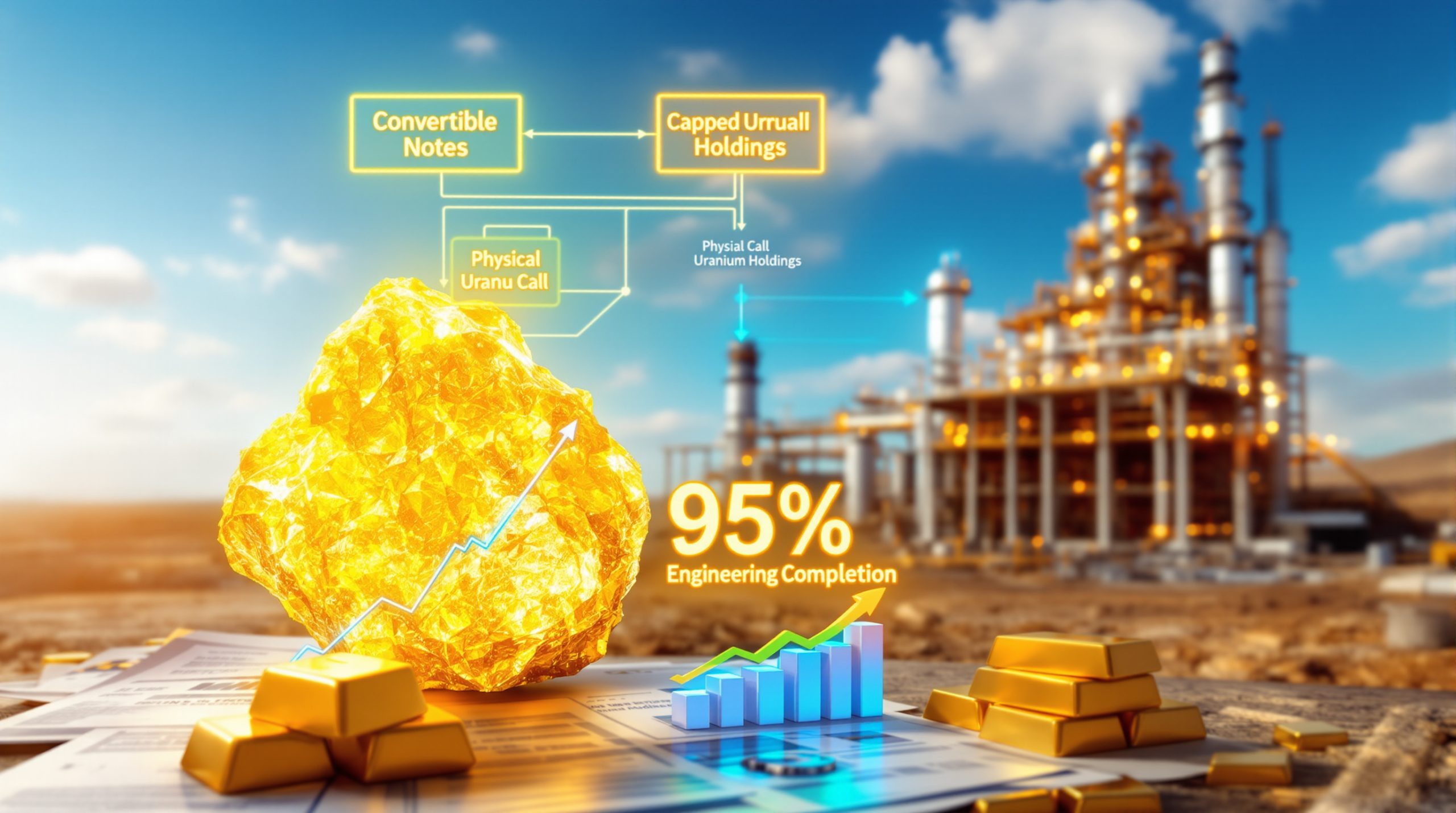What's Happening in the Precious Metals Markets Right Now?
Current Market Dynamics
Gold has recently achieved remarkable new all-time high gold analysis, surpassing $3,300 per ounce in 2025. This milestone represents a significant breakthrough for the yellow metal after years of consolidation and gradual appreciation.
Market indicators suggest gold may enter a sideways trading range throughout the summer months, following a pattern often seen in precious metals markets where strong rallies are followed by consolidation periods. This allows the market to digest gains and establish new support levels.
Silver, platinum, and palladium remain significantly undervalued compared to gold based on historical ratios, creating potential opportunities for investors focusing on relative value in the silver and gold markets.
Technical analysts have observed a notable breakout in silver markets, though sustained momentum will require confirmation through consistent trading volumes and price action above key resistance levels.
The traditional "sell in May and come back after Labor Day" pattern appears to be holding true in 2025, with seasonal weakness affecting trading volumes and investor sentiment during summer months.
Key Valuation Metrics
The gold-silver ratio insights remains elevated at approximately 75:1, well above the long-term historical average of 60:1, suggesting potential for silver to narrow the gap as the bull market in precious metals continues to unfold.
A similar undervaluation exists in the platinum-to-gold ratio, which has inverted from its historical norm. Traditionally, platinum commanded a premium to gold, but currently trades at a significant discount.
White metals (silver, platinum, palladium) are showing early signs of catching up to gold's performance, with increasing investor interest as affordability and industrial applications drive demand.
Recent price action demonstrates increased volatility in precious metals markets, with larger daily percentage moves becoming more common as trading volumes expand and new participants enter the market.
Why Are Investors Turning to Precious Metals in 2025?
Economic Uncertainty Factors
Persistent inflation concerns continue driving safe-haven demand, as official inflation figures remain elevated while real-world price increases in essential goods and services outpace reported statistics.
Banking sector vulnerabilities have increased interest in physical assets, with several regional banking stress events in late 2024 reminding investors of counterparty risks within the financial system.
Currency devaluation risks are pushing institutional investors toward gold, with sovereign wealth funds and central banks increasing their allocation to precious metals as a hedge against currency instability.
Geopolitical tensions in multiple regions have created premium pricing in certain markets, with physical gold commanding higher premiums in areas experiencing greater political or economic uncertainty.
Growing recognition of precious metals as portfolio diversification tools has expanded beyond traditional investors, with younger demographics increasingly viewing gold and silver as alternatives to conventional financial assets.
Investment Psychology Considerations
Many new investors enter the precious metals market with unrealistic expectations, often anticipating immediate and substantial price appreciation following their initial purchases.
A common misconception persists that assets should appreciate immediately after purchase, leading to disappointment and premature selling when short-term price movements don't meet expectations.
Market volatility frequently shakes out inexperienced investors who lack conviction in their investment thesis, creating transfer of ownership from weak hands to stronger, more committed holders.
"Strong bull markets typically experience significant corrections to test investor conviction. These pullbacks separate emotional speculators from disciplined investors who understand the longer-term fundamentals."
A disciplined approach that focuses on fundamental value rather than short-term price movements remains essential for long-term success in precious metals investing.
How Should You Approach Precious Metals Investing?
Dollar-Cost Averaging Strategy
Invest fixed monetary amounts at regular intervals (e.g., monthly) to reduce the impact of market volatility and eliminate the need to time market entries perfectly.
This approach allows investors to purchase more metal when prices decline and less when prices rise, automatically taking advantage of market fluctuations without emotional decision-making.
Dollar-cost averaging creates a favorable average purchase price over time, particularly in volatile markets where timing exact bottoms or tops proves challenging even for experienced traders.
This strategy reduces emotional decision-making during market fluctuations, preventing panic selling during corrections or FOMO (fear of missing out) buying during rapid rallies.
Building discipline in investment approach helps maintain a long-term perspective, which historically has rewarded precious metals investors who remain committed through market cycles.
Portfolio Allocation Considerations
Determine an appropriate percentage of your portfolio for precious metals based on your financial goals, risk tolerance, and economic outlook. Common allocations range from 5-20% of total investment assets.
Balance between gold and silver should reflect your risk tolerance, with silver typically offering higher potential returns but with greater volatility compared to gold's more stable price behavior.
Consider diversification across different forms of precious metals ownership:
- Physical bullion (coins and bars) for direct ownership without counterparty risk
- ETFs for liquidity and ease of trading
- Mining stocks for potential leverage to metal prices
- Royalty/streaming companies for exposure with reduced operational risk
Evaluate storage options and associated costs, weighing considerations between home storage, safe deposit boxes, and professional vault storage services, each with different security profiles and accessibility.
Maintain sufficient liquidity to capitalize on potential buying opportunities during market corrections, when premiums on physical products often decrease while offering favorable entry points.
What's the Expert Outlook for Gold in 2025?
Near-Term Price Projections
A potential consolidation phase is expected through summer months, allowing the market to digest recent gains while establishing support at higher levels than previous years.
The trading range between $3,000-$3,300 appears likely based on technical analysis of support and resistance levels, with volatility decreasing as the market establishes a new equilibrium.
Technical indicators, including RSI (Relative Strength Index) and MACD (Moving Average Convergence Divergence), suggest a healthy pause after strong upward movement earlier in the year.
Seasonal patterns support a temporary slowdown in momentum during summer months, consistent with historical tendencies in precious metals markets.
Despite potential short-term pullbacks, the overall bull market remains intact, supported by fundamental factors including central bank purchasing, inflation concerns, and geopolitical tensions.
Long-Term Market Fundamentals
Central bank purchasing continues providing significant price support, with official sector buying exceeding 800 tons annually for three consecutive years, representing a structural shift in central bank attitudes toward gold.
Mining production constraints are limiting new supply, with major gold producers reporting declining ore grades and increasing production costs, creating a ceiling on potential supply growth.
Manufacturing and technology demands create baseline industrial usage that supports price floors, particularly in electronics and medical applications where gold's unique properties cannot easily be substituted.
Investment demand fluctuates but maintains an upward trend, with increasing allocation recommendations from mainstream financial advisors who previously dismissed precious metals.
Wealth preservation sentiment is strengthening among institutional investors concerned about long-term purchasing power and currency stability in an era of unprecedented monetary expansion.
When Will Silver Finally Take Off?
Silver's Unique Market Position
Silver's dual role as both monetary and industrial metal creates a unique market dynamic, with investment demand influenced by monetary factors while industrial usage provides baseline consumption regardless of investment sentiment.
Industrial demand is growing substantially with the green energy transition, as silver remains essential for solar panels (approximately 100mg per cell), electric vehicle components, and advanced electronics.
Supply constraints are developing in the mining sector as primary silver mines become increasingly rare, with approximately 70% of silver production coming as a byproduct of base metal mining operations.
Investment demand remains relatively low compared to historical patterns, with silver ETF holdings and coin sales below previous peak levels, suggesting significant potential for increased participation.
Potential for rapid price acceleration exists when investor sentiment shifts, as silver's smaller market size compared to gold means it requires less capital inflow to create substantial price movements.
Catalysts for Silver Price Movement
Narrowing of the gold-silver ratio from current elevated levels could trigger additional investment interest, particularly when technical traders observe the ratio breaking below key moving averages.
Increased industrial demand from technological applications continues to grow at 4-5% annually, with green energy technologies alone projected to consume over 150 million ounces annually by 2027.
Growing investment interest may accelerate as silver's affordability advantage over gold becomes more apparent during periods of economic stress when smaller-denomination precious metals become attractive.
Supply deficits are projected in coming years as aging mines deplete reserves while new project development remains constrained by regulatory challenges and declining ore grades.
Potential monetary system reassessment incorporating precious metals could dramatically change perception of silver, particularly if digital payment systems begin incorporating precious metals backing.
How Might Precious Metals Function in a Financial Crisis?
Community Resilience Planning
Building trust networks before crisis situations develop creates essential social infrastructure that can facilitate exchange during disruptions, with community members knowing who has resources and skills.
Establishing communication systems for local exchange becomes vital when centralized networks face challenges, with ham radio, local bulletin boards, and designated meeting places serving as contingency options.
Creating transparent verification methods for metal authenticity is essential, with community members learning basic testing techniques such as:
- Specific gravity testing using water displacement
- Magnetic testing (silver and gold are non-magnetic)
- Dimensional verification against known specifications
- Sound testing ("ping test") for recognizable resonant frequencies
Developing consensus on valuation metrics during disruption helps prevent exploitation, with community agreements on fair exchange rates between precious metals and essential goods or services.
Balancing individual preparedness with community cooperation offers the most resilient approach, recognizing that no individual can be entirely self-sufficient during prolonged economic disruptions.
Practical Considerations for Crisis Scenarios
Smaller denominations offer greater utility for everyday transactions, making fractional gold coins (1/10 oz, 1/4 oz) and silver coins more practical for potential exchange than larger units.
Physical possession eliminates counterparty risk that becomes acute during financial crises, when institutional failures can restrict access to assets held through intermediaries.
Local exchange systems require community trust and organization established before crisis situations develop, with informal networks often functioning more effectively than hastily arranged formal systems.
Resource prioritization becomes essential during extended disruptions, with the following hierarchy of needs:
- Clean water and purification methods
- Food storage and production capability
- Energy for heating, cooling, and basic power
- Medical supplies and knowledge
- Communications capabilities
- Security considerations
- Medium of exchange (where precious metals may function)
Collaborative approaches prove more sustainable than isolation strategies, as communities pooling resources and skills demonstrate greater resilience than individuals attempting self-sufficiency.
What's Behind Recent Political Interest in Gold?
Evolving Political Narratives
Increased mentions of gold in political discourse reflect growing concern about monetary stability, with candidates and elected officials across the political spectrum acknowledging precious metals' historical role.
References to traditional monetary principles have resurfaced in public discussions, with the ancient wisdom that "whoever holds the gold makes the rules" gaining renewed relevance in geopolitical positioning.
Questions raised about national gold reserves and auditing have intensified, with several nations repatriating gold holdings from foreign storage facilities to maintain direct control over their reserves.
Speculation about potential monetary system changes has expanded beyond alternative financial circles into mainstream discussion, acknowledging structural weaknesses in the current fiat currency framework.
A notable contrast exists between public statements and policy implementation, with official dismissals of gold's relevance contradicted by actions like central bank purchasing and strategic reserve building.
Potential Monetary System Developments
Theories about staged implementation of new monetary frameworks suggest potential for significant system changes, possibly beginning with greater digitalization before incorporating commodity backing.
Initial phase might feature unbacked digital currencies as central bank digital currency (CBDC) initiatives accelerate globally, potentially establishing the infrastructure for subsequent backing mechanisms.
The possibility exists for gold backing introduced after digital-only system failure, providing tangible assets behind digital interfaces to restore confidence following potential currency crises.
Historical patterns show official denials typically preceding policy shifts, with monetary authorities traditionally dismissing speculative commentary before implementing similar measures when circumstances require.
International coordination would likely be required for any significant system changes, suggesting careful observation of multinational financial bodies like the IMF and their evolving position on precious metals.
How Can Investors Protect Themselves in Uncertain Times?
Risk Management Strategies
Physical possession eliminates counterparty risk but requires consideration of secure storage solutions, balancing accessibility with protection against theft, damage, or confiscation.
Strategic storage diversification across jurisdictions provides protection against localized risks, with allocation potentially spread between home storage, domestic vault facilities, and international locations.
Balancing liquidity needs with long-term holdings ensures resources remain available for emergencies while maintaining core positions through market fluctuations:
| Position Type | Percentage | Purpose |
|---|---|---|
| Highly liquid | 15-25% | Emergency needs, opportunities |
| Core holdings | 50-70% | Long-term wealth preservation |
| Strategic | 15-25% | Specific objectives, speculative |
Maintaining purchasing power through inflationary periods remains the primary objective for many precious metals investors, focusing on preservation rather than speculation.
Avoiding excessive concentration in any single asset class follows sound investment principles, with precious metals functioning as one component within a broader strategy that may include productive assets, skills development, and essential supplies.
Educational Resources and Community Building
Developing knowledge about precious metals markets and history provides essential context for making informed decisions, with understanding of previous monetary systems offering perspective on potential future developments.
Connecting with like-minded investors for information sharing creates valuable networks for exchanging ideas, experiences, and strategies without the conflicts of interest often present in commercial advice.
Following reputable analysts and market commentators helps filter signal from noise in a sector prone to sensationalism, identifying sources with track records of accurate analysis rather than perpetual crisis narratives.
Understanding the difference between short-term trading and long-term investing clarifies appropriate strategies and expectations, with most individual investors better suited to long-term positioning than active trading.
Building relationships with trusted dealers and storage providers before times of market stress ensures access to reliable services when needed most, as reputable providers prioritize existing clients during supply constraints.
FAQ: Essential Questions About Silver and Gold Markets
What is the historical gold-to-silver ratio?
The gold-to-silver ratio has averaged approximately 60:1 over the past century, though it has fluctuated significantly. During precious metals bull markets, this ratio typically contracts, sometimes reaching as low as 30:1. The current elevated ratio suggests potential for silver outperformance.
How do seasonal patterns affect precious metals prices?
Precious metals often experience seasonal patterns, with summer months typically showing weakness ("sell in May and come back after Labor Day"). However, these patterns can be overridden by major economic events or significant changes in investor sentiment.
What forms of silver and gold are best for investment?
Investment options include physical bullion (bars and coins), ETFs, mining stocks, and futures contracts. Physical metal eliminates counterparty risk but requires secure storage. ETFs offer convenience but involve trust in the fund structure. Mining stocks provide leverage to metal prices but carry company-specific risks.
How can investors verify the authenticity of physical precious metals?
Authentication methods include specific gravity testing, magnetic testing, dimensional verification, sound testing (ping test), and professional assay. Working with reputable dealers and understanding basic testing methods reduces the risk of acquiring counterfeit products.
What role might precious metals play in a future monetary system?
While a complete return to a gold standard appears unlikely, precious metals may play an increasing role in monetary systems through partial backing of currencies, inclusion in central bank digital currency baskets, or as settlement mechanisms between nations for international trade.
Navigating the Precious Metals Markets in 2025
The silver and gold markets in 2025 present both challenges and opportunities for investors. Gold's recent strength has established new price benchmarks, while silver and other white metals appear positioned for potential outperformance as they narrow valuation gaps. Market cycles suggest a possible consolidation phase for gold through the summer months, creating strategic entry points for disciplined investors.
The key to success in precious metals investing remains consistent: maintain discipline, understand market cycles, employ dollar-cost averaging, and focus on long-term wealth preservation rather than short-term price movements. By approaching these markets with realistic expectations and a strategic mindset, investors can effectively incorporate precious metals into their broader financial planning.
As economic uncertainties persist and monetary systems evolve, the fundamental case for precious metals ownership continues to strengthen, reinforcing their historical role as stores of value during periods of financial instability.
"The ultimate purpose of owning precious metals isn't speculation but preservation—maintaining purchasing power across time and through economic cycles that inevitably challenge purely financial assets."
For investors new to the sector, starting with small, regular purchases while developing knowledge provides a sound foundation. Understanding that precious metals function as insurance first and investments second helps establish appropriate expectations and allocation decisions.
As we navigate through 2025, the convergence of technological revolution, monetary uncertainty, and resource constraints continues to strengthen the fundamental case for gold market performance within a diversified approach to preserving wealth and purchasing power.
Current gold price forecast 2025 projections remain bullish despite potential short-term consolidation, while implementing effective gold market investment strategies becomes increasingly important for both preservation and growth objectives. Additionally, tracking live gold price updates and consulting comprehensive metal price charts can help investors make more informed decisions in these dynamic markets.
Disclaimer: This article contains market analysis and projections that should not be considered financial advice. All investments carry risk, and past performance is not indicative of future results. Readers should conduct their own research and consider consulting with financial professionals before making investment decisions.
Want to Know When the Next Major Gold Discovery Happens?
Discovery Alert's proprietary Discovery IQ model instantly notifies investors about significant mineral discoveries on the ASX, providing real-time insights for both short-term trades and long-term investments. Explore historic examples of exceptional mining discoveries and their remarkable returns by visiting our dedicated discoveries page and start your 30-day free trial today.




